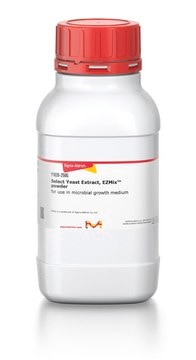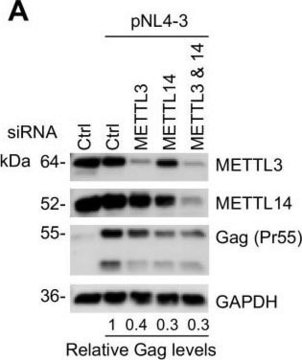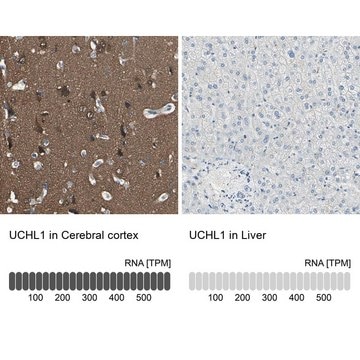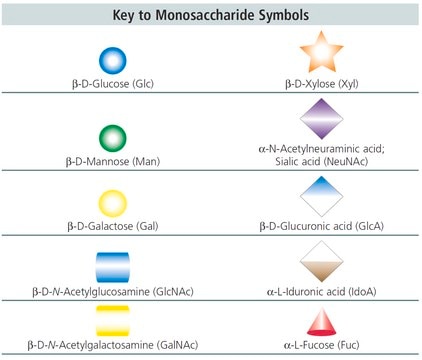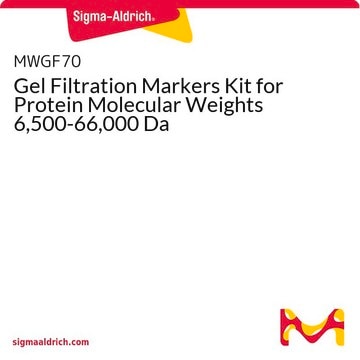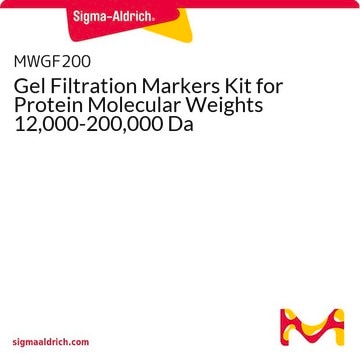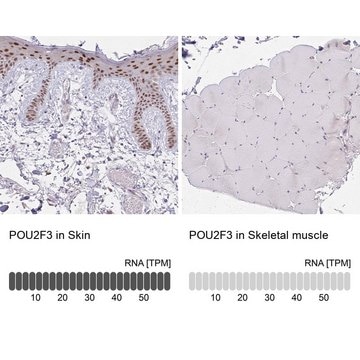05-466
Anti-GRK 4-6 Antibody, clone A16/17
clone A16/17, Upstate®, from mouse
Sign Into View Organizational & Contract Pricing
All Photos(1)
About This Item
UNSPSC Code:
12352203
eCl@ss:
32160702
NACRES:
NA.41
Recommended Products
biological source
mouse
Quality Level
antibody form
purified immunoglobulin
antibody product type
primary antibodies
clone
A16/17, monoclonal
species reactivity
mouse, human, rat
manufacturer/tradename
Upstate®
technique(s)
immunoprecipitation (IP): suitable
western blot: suitable
isotype
IgG1κ
NCBI accession no.
UniProt accession no.
shipped in
dry ice
target post-translational modification
unmodified
Gene Information
mouse ... Grk4(14772)
Specificity
GRK 4, GRK 5 and GRK 6
Immunogen
GST fusion protein corresponding to residues 463-590 of bovine GRK 5
Application
Anti-GRK 4-6 Antibody, clone A16/17 detects level of GRK 4-6 & has been published & validated for use in IP & WB.
Research Category
Signaling
Signaling
Research Sub Category
GPCR, cAMP/cGMP & Calcium Signaling
GPCR, cAMP/cGMP & Calcium Signaling
Quality
routinely evaluated by immunoblot on murine 3T3/A31 RIPA lysate or human K562 cells
Target description
65-70kDa
Physical form
0.1M Tris-glycine, pH 7.4, 0.15 NaCl with 0.05% sodium azide
Ammonium Sulfate Precipitation
Format: Purified
Storage and Stability
2 years at -20°C
Analysis Note
Control
Positive Antigen Control: Catalog #12-305, 3T3/A31 lysate. Add 2.5 μL of 2-mercapto-ethanol/100 μL of lysate and boil for 5 minutes to reduce the preparation. Load 20 μg of reduced lysate per lane for minigels.
Positive Antigen Control: Catalog #12-305, 3T3/A31 lysate. Add 2.5 μL of 2-mercapto-ethanol/100 μL of lysate and boil for 5 minutes to reduce the preparation. Load 20 μg of reduced lysate per lane for minigels.
Legal Information
UPSTATE is a registered trademark of Merck KGaA, Darmstadt, Germany
Disclaimer
Unless otherwise stated in our catalog or other company documentation accompanying the product(s), our products are intended for research use only and are not to be used for any other purpose, which includes but is not limited to, unauthorized commercial uses, in vitro diagnostic uses, ex vivo or in vivo therapeutic uses or any type of consumption or application to humans or animals.
Not finding the right product?
Try our Product Selector Tool.
wgk_germany
WGK 1
flash_point_f
Not applicable
flash_point_c
Not applicable
Certificates of Analysis (COA)
Search for Certificates of Analysis (COA) by entering the products Lot/Batch Number. Lot and Batch Numbers can be found on a product’s label following the words ‘Lot’ or ‘Batch’.
Already Own This Product?
Find documentation for the products that you have recently purchased in the Document Library.
Y Nagayama et al.
The Journal of biological chemistry, 271(17), 10143-10148 (1996-04-26)
Homologous desensitization of G protein-coupled receptors involves agonist-dependent phosphorylation of receptors by G protein-coupled receptor kinases (GRKs). To identify GRK(s) that play a role in homologous desensitization of the thyrotropin (TSH) receptor, thyroid cDNA was amplified by polymerase chain reaction
E R Bychkov et al.
Neurobiology of aging, 29(3), 379-396 (2006-11-28)
Arrestins and G proteins-coupled receptor kinases (GRKs) regulate signaling and trafficking of G protein-coupled receptors. We investigated changes in the expression of arrestins and GRKs in the striatum of patients with Parkinson's disease without (PD) or with dementia (PDD) at
Phosphatidylinositol 4,5-bisphosphate (PIP2)-enhanced G protein-coupled receptor kinase (GRK) activity. Location, structure, and regulation of the PIP2 binding site distinguishes the GRK subfamilies.
Pitcher, J A, et al.
The Journal of Biological Chemistry, 271, 24907-24913 (1996)
Sudipto Das et al.
Pflugers Archiv : European journal of physiology, 464(1), 101-109 (2012-04-25)
Mitochondrial structure and function are central to cell physiology and are mutually interdependent. Mitochondria represent a primary target of the alcohol-induced tissue injury, particularly in the liver, where the metabolic effects of ethanol are predominant. However, the effect of ethanol
Weiwei Wu et al.
PloS one, 15(4), e0232019-e0232019 (2020-04-29)
Parkinson's disease (PD) is a common neurodegenerative disorder which is mostly sporadic but familial-linked PD (FPD) cases have also been found. The first reported gene mutation that linked to PD is α-synuclein (α-syn). Studies have shown that mutations, increased expression
Our team of scientists has experience in all areas of research including Life Science, Material Science, Chemical Synthesis, Chromatography, Analytical and many others.
Contact Technical Service